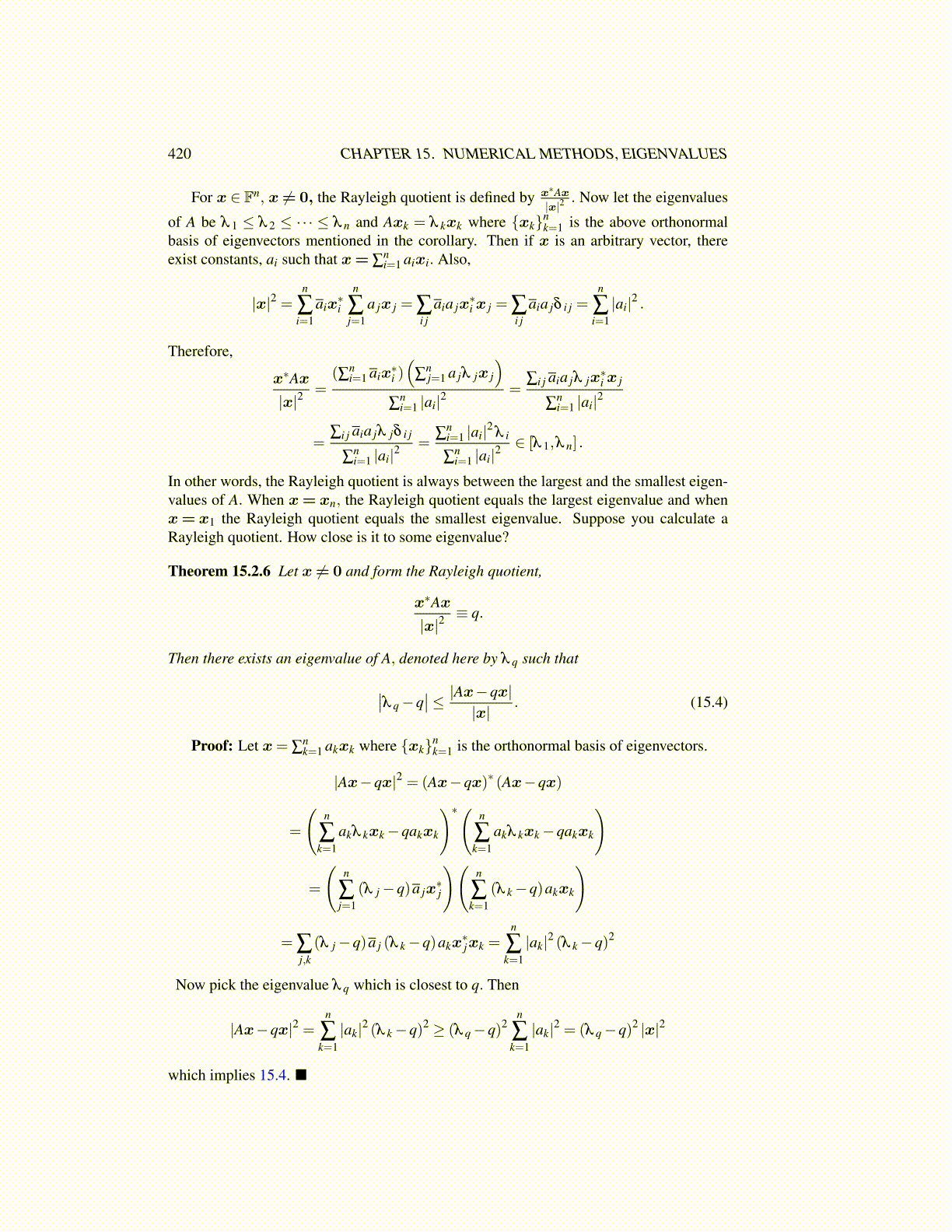
420 CHAPTER 15. NUMERICAL METHODS, EIGENVALUES
For x ∈ Fn, x ̸= 0, the Rayleigh quotient is defined by x∗Ax|x|2
. Now let the eigenvalues
of A be λ 1 ≤ λ 2 ≤ ·· · ≤ λ n and Axk = λ kxk where {xk}nk=1 is the above orthonormal
basis of eigenvectors mentioned in the corollary. Then if x is an arbitrary vector, thereexist constants, ai such that x= ∑
ni=1 aixi. Also,
|x|2 =n
∑i=1
aix∗i
n
∑j=1
a jx j = ∑i j
aia jx∗i x j = ∑
i jaia jδ i j =
n
∑i=1|ai|2 .
Therefore,
x∗Ax
|x|2=
(∑ni=1 aix
∗i )(
∑nj=1 a jλ jx j
)∑
ni=1 |ai|2
=∑i j aia jλ jx
∗i x j
∑ni=1 |ai|2
=∑i j aia jλ jδ i j
∑ni=1 |ai|2
=∑
ni=1 |ai|2 λ i
∑ni=1 |ai|2
∈ [λ 1,λ n] .
In other words, the Rayleigh quotient is always between the largest and the smallest eigen-values of A. When x= xn, the Rayleigh quotient equals the largest eigenvalue and whenx= x1 the Rayleigh quotient equals the smallest eigenvalue. Suppose you calculate aRayleigh quotient. How close is it to some eigenvalue?
Theorem 15.2.6 Let x ̸= 0 and form the Rayleigh quotient,
x∗Ax
|x|2≡ q.
Then there exists an eigenvalue of A, denoted here by λ q such that
∣∣λ q−q∣∣≤ |Ax−qx|
|x|. (15.4)
Proof: Let x= ∑nk=1 akxk where {xk}n
k=1 is the orthonormal basis of eigenvectors.
|Ax−qx|2 = (Ax−qx)∗ (Ax−qx)
=
(n
∑k=1
akλ kxk−qakxk
)∗( n
∑k=1
akλ kxk−qakxk
)
=
(n
∑j=1
(λ j−q)a jx∗j
)(n
∑k=1
(λ k−q)akxk
)
= ∑j,k(λ j−q)a j (λ k−q)akx
∗jxk =
n
∑k=1|ak|2 (λ k−q)2
Now pick the eigenvalue λ q which is closest to q. Then
|Ax−qx|2 =n
∑k=1|ak|2 (λ k−q)2 ≥ (λ q−q)2
n
∑k=1|ak|2 = (λ q−q)2 |x|2
which implies 15.4. ■